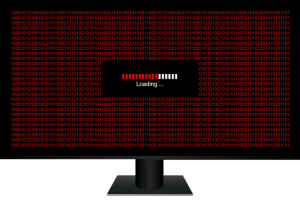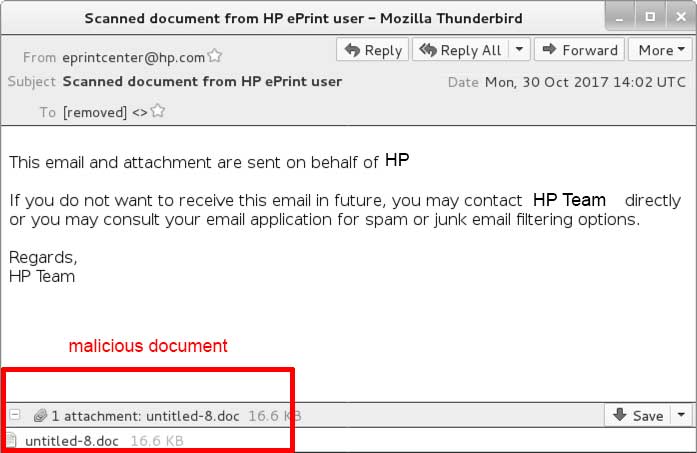 This article aims to help you by explaining different methods on how to remove the malicious process webservice.exe which imitates legitimate Windows process from your computer, but in reality mines for cryptocurrencies.
This article aims to help you by explaining different methods on how to remove the malicious process webservice.exe which imitates legitimate Windows process from your computer, but in reality mines for cryptocurrencies.
Webservice.exe is a process which pretends to be a legitimate Windows services process as it runs as an active process on the computers that have been infected by it. In realty however, the malicious process performs series of unwanted activities on your computer system, the main of which is to mine for cryptocurrencies by using a large percentage of your CPU and GPU components (Central Processor and Graphics Processor). If you believe that your computer has become infected with the Webservice.exe virus, reccomendations are to immediately remove it from your PC, by reading this article.

Threat Summary
| Name | webservice.exe Miner Virus |
| Type | Cryptocurrency miner malware. |
| Short Description | Aims to use your CPU or GPU (or both) resources in order to mine for cryptocurrencies and generate funds to the hackers who are behind the infection. |
| Symptoms | Your computer may slow-down, freeze at times and perform other unwanted activities. Hightened usage of your CPU and GPU as well as higher temperature of the components, due to more calculations performed during the mining process. |
| Distribution Method | Via malicious e-mail spam or fake setup wizards. |
| Detection Tool |
See If Your System Has Been Affected by malware
Download
Malware Removal Tool
|
User Experience | Join Our Forum to Discuss webservice.exe Miner Virus. |

Webservice.exe – How Did I Get Infected
Among many methods being used, the main method of infection with the webservice.exe malware might be via e-mail spam messages. Such malspam may deceive you that the infection file bringing webservice.exe on your PC is of legitimate character, like an invoice, receipt, banking statement or any other fake document. The attachment is often accompanied by a deceitful message, for example:
As soon as the victim opens the malicious file, the webservice.exe file may be downloaded and automatically executed on the infected computer.
Besides via e-mail, the malicious files of this malware may also be encountered as:
- Fake installers of programs.
- Key generators.
- Game patches.
- Program license activators.
- Cracks.
- Other seemingly legitimate software.

Webservice.exe Virus – What Does It Do
As soon as infection with this malware takes place on your computer, you may immediately notice it. The virus firstly downloads its file from a remote control server and may situate it in one of the following Windows directories:
- %AppData%
- %Local%
- %LocalLow%
- %Roaming%
- %Temp%
- %Windows%
After the malicious file is dropped, the webservice.exe process runs automatically in the Windows Task Manager. The process may be seen using a lot of your CPU power or GPU (video card) resources as well. This results in a lot of side heat being generated on your computer, causing it’s fan to run at a higher speed. You may notice it and if so, you need to immediately check your Windows Task Manager for the webservice.exe process, since there is a good chance that this may be caused by it or other cryptocurrency miner just like it. The file itself is pre-programmed in order to connect to a remote command and control host whose primary purpose is to connect your computer to a mining pool, which unifies the resources of multiple computers in order to make them conjointly mine for cryptocurrencies and therefore generate tokens (BitCoins, Monero coins, etc.). This happens at the expense of your PC’s resources and the mining process may result in your computer becoming unstable, freezing at times and even may break some of it’s components due to overheating.
In addition to mining for cryptocurrencies, the webservice.exe process may also perform other negative activities on your computer, like any other malware usually does. These include:
- Logging your keystrokes to obtain passowrds of your accounts, etc.
- Downloading updates to stay obfuscated. Also known as obfuscators or crypters.
- Taking screenshots.
- Obtaining your network and system information.
- Stealing saved logins and passwords.
- Installing other malware on your infected computer.

How to Remove Webservice.exe
In order to remove Webservice.exe completely from your computer system, we advise you to follow the instructions manual below. They are created based on various steps, which aim to help you isolate Webservice.exe firstly and then remove it either manually or automatically. For most effective removal, we also recommend that you focus on removing all the related objects to this cryptocurrency miner malware automatically using an advanced anti-malware program. These activities will help you remove this virus from your system completely by scanning for each object related to it and removing it entirely plus protecting the infected computer against future infections as well.
Preparation before removing webservice.exe Miner Virus.
Before starting the actual removal process, we recommend that you do the following preparation steps.
- Make sure you have these instructions always open and in front of your eyes.
- Do a backup of all of your files, even if they could be damaged. You should back up your data with a cloud backup solution and insure your files against any type of loss, even from the most severe threats.
- Be patient as this could take a while.
- Scan for Malware
- Fix Registries
- Remove Virus Files
Step 1: Scan for webservice.exe Miner Virus with SpyHunter Anti-Malware Tool



Step 2: Clean any registries, created by webservice.exe Miner Virus on your computer.
The usually targeted registries of Windows machines are the following:
- HKEY_LOCAL_MACHINE\Software\Microsoft\Windows\CurrentVersion\Run
- HKEY_CURRENT_USER\Software\Microsoft\Windows\CurrentVersion\Run
- HKEY_LOCAL_MACHINE\Software\Microsoft\Windows\CurrentVersion\RunOnce
- HKEY_CURRENT_USER\Software\Microsoft\Windows\CurrentVersion\RunOnce
You can access them by opening the Windows registry editor and deleting any values, created by webservice.exe Miner Virus there. This can happen by following the steps underneath:


 Tip: To find a virus-created value, you can right-click on it and click "Modify" to see which file it is set to run. If this is the virus file location, remove the value.
Tip: To find a virus-created value, you can right-click on it and click "Modify" to see which file it is set to run. If this is the virus file location, remove the value.Step 3: Find virus files created by webservice.exe Miner Virus on your PC.
1.For Windows 8, 8.1 and 10.
For Newer Windows Operating Systems
1: On your keyboard press + R and write explorer.exe in the Run text box and then click on the Ok button.

2: Click on your PC from the quick access bar. This is usually an icon with a monitor and its name is either “My Computer”, “My PC” or “This PC” or whatever you have named it.

3: Navigate to the search box in the top-right of your PC's screen and type “fileextension:” and after which type the file extension. If you are looking for malicious executables, an example may be "fileextension:exe". After doing that, leave a space and type the file name you believe the malware has created. Here is how it may appear if your file has been found:

N.B. We recommend to wait for the green loading bar in the navigation box to fill up in case the PC is looking for the file and hasn't found it yet.
2.For Windows XP, Vista, and 7.
For Older Windows Operating Systems
In older Windows OS's the conventional approach should be the effective one:
1: Click on the Start Menu icon (usually on your bottom-left) and then choose the Search preference.

2: After the search window appears, choose More Advanced Options from the search assistant box. Another way is by clicking on All Files and Folders.

3: After that type the name of the file you are looking for and click on the Search button. This might take some time after which results will appear. If you have found the malicious file, you may copy or open its location by right-clicking on it.
Now you should be able to discover any file on Windows as long as it is on your hard drive and is not concealed via special software.
webservice.exe Miner Virus FAQ
What Does webservice.exe Miner Virus Trojan Do?
The webservice.exe Miner Virus Trojan is a malicious computer program designed to disrupt, damage, or gain unauthorized access to a computer system. It can be used to steal sensitive data, gain control over a system, or launch other malicious activities.
Can Trojans Steal Passwords?
Yes, Trojans, like webservice.exe Miner Virus, can steal passwords. These malicious programs are designed to gain access to a user's computer, spy on victims and steal sensitive information such as banking details and passwords.
Can webservice.exe Miner Virus Trojan Hide Itself?
Yes, it can. A Trojan can use various techniques to mask itself, including rootkits, encryption, and obfuscation, to hide from security scanners and evade detection.
Can a Trojan be Removed by Factory Reset?
Yes, a Trojan can be removed by factory resetting your device. This is because it will restore the device to its original state, eliminating any malicious software that may have been installed. Bear in mind that there are more sophisticated Trojans that leave backdoors and reinfect even after a factory reset.
Can webservice.exe Miner Virus Trojan Infect WiFi?
Yes, it is possible for a Trojan to infect WiFi networks. When a user connects to the infected network, the Trojan can spread to other connected devices and can access sensitive information on the network.
Can Trojans Be Deleted?
Yes, Trojans can be deleted. This is typically done by running a powerful anti-virus or anti-malware program that is designed to detect and remove malicious files. In some cases, manual deletion of the Trojan may also be necessary.
Can Trojans Steal Files?
Yes, Trojans can steal files if they are installed on a computer. This is done by allowing the malware author or user to gain access to the computer and then steal the files stored on it.
Which Anti-Malware Can Remove Trojans?
Anti-malware programs such as SpyHunter are capable of scanning for and removing Trojans from your computer. It is important to keep your anti-malware up to date and regularly scan your system for any malicious software.
Can Trojans Infect USB?
Yes, Trojans can infect USB devices. USB Trojans typically spread through malicious files downloaded from the internet or shared via email, allowing the hacker to gain access to a user's confidential data.
About the webservice.exe Miner Virus Research
The content we publish on SensorsTechForum.com, this webservice.exe Miner Virus how-to removal guide included, is the outcome of extensive research, hard work and our team’s devotion to help you remove the specific trojan problem.
How did we conduct the research on webservice.exe Miner Virus?
Please note that our research is based on an independent investigation. We are in contact with independent security researchers, thanks to which we receive daily updates on the latest malware definitions, including the various types of trojans (backdoor, downloader, infostealer, ransom, etc.)
Furthermore, the research behind the webservice.exe Miner Virus threat is backed with VirusTotal.
To better understand the threat posed by trojans, please refer to the following articles which provide knowledgeable details.














